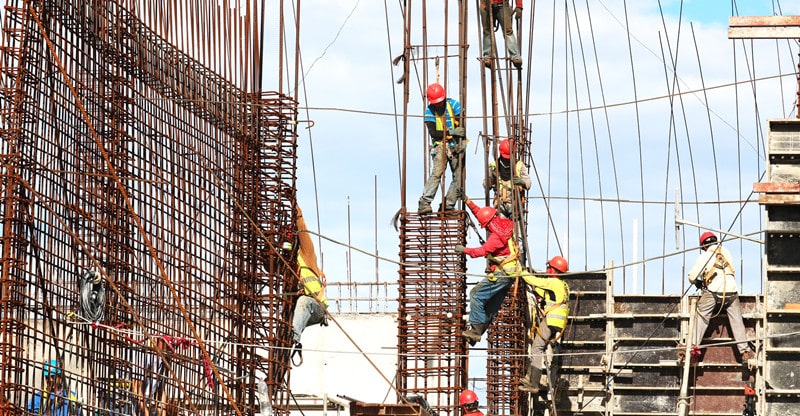How Are Accidents Investigated In A Construction Site?
Construction sites are prone to many accidents. According to the Occupational Safety and Health Administration, nearly 20% of the workplace fatalities in the United States happen in construction sites. While the minor accidents do not require a lot of follow up, the significant accidents call for an in-depth investigation process to determine the cause.
An accident investigation is a systematic or formal analysis of the events which took place at the accident scene. It involves documentation and a thorough examination of all the possible contributing factors.
The accident investigations are necessary because:
- They help project managers to prevent similar risks from reoccurring in the future.
- They help insurance firms to get the information they need to determine how much they will offer for compensation.
- It is a legal requirement
- They demonstrate welfare concern to the employees
If you work in a construction site or you are looking forward to putting up a construction project, you should familiarize yourself with the process of accident investigation in the construction process. Here is a quick guide of what happens:
First Aid/Medical Care
The first step is to take care of injured persons. If possible, you should provide a handy first-aid solution as you make arrangements on how to proceed to the hospital. The law requires all construction sites to have all the basic first aid kits, and the tools should, therefore, be readily available.
After that, you should take the people with severe injuries to the hospital. For future references, keep a record of the payments, and all the medications that you used in the hospital.
Identify the Causes
You should know the cause of the accident so that you can have a proper plan of how you will undertake the other procedures. The main types of accidents which are common in construction sites include slip and falls, gas leaks and explosions, crane accidents, electrocutions, etc.
Write down the particular types of disaster, and then find out the cause. Was it because of the workers’ negligence? Did the accident happen as a result of electricity issues? Or did a third party cause it? If you were not in the accident scene, get the correct information from the other employees. If possible, seek the help of investigative experts to find out the exact cause.
Report the Findings in Written Form
Keep a written record of all the results. Your records should include the possible causes of the accidents, the number of people who were at the scene, and the number of injured persons. Your report should also include property damages, including their initial loss and price estimations.
The report should contain accurate information only because false recordings can easily land you into legal problems. You might need several reports; one for the police, for the relevant authorities, and one copy for yourself.
Inform Your Insurance
Inform your insurance firm immediately so that you can initiate a claim process. A successful claim application will help you get compensation for all the sustained personal injuries and property damages as well. As mentioned here, a personal injury lawyer can help you initiate a good claim insurance process.
A lawyer can also help you in collecting the required information that you need to begin a strong case. There are many personal injury lawyers in every state, and you should, therefore, carry out a background search on them to work with the best. After a successful claim application, your insurance firm will most probably give you feedback on your claim within a month.
Develop a Correction Plan
Construction site accidents are costly and devastating. You should, therefore, develop a robust correction plan to prevent them from re- happening in the future. A detailed corrective action plan should include all the viable recommendations which will work well in both the short run and the long run.
Here are essential actions to include:
- Employee training programs which you will start to equip your workers. Programs like 360 Training’s OSHA 10 online training courses are a fundamental tool available to employers to provide their workers with the skills they need to manage construction site hazards and prevent injuries from occurring.
- Maintenance activities that you will put in place to enhance the working environment.
- Changes that you will apply to the job operation procedures.
- Engineering changes that you make in the firm.
- New tools and equipment that you will purchase.
How to Prevent Further Similar Accidents
Accidents in the construction site vary–from slip, falls, chemical, and electrical in nature. These accidents can be prevented by strict compliance and implementation of safety protocols, such as the following:
1. Use of Safety Gears
Construction sites have many hazardous things, so workers are always advised to completely gear up. The important safety gear pieces available in construction sites include the following:
- Specific protective clothing (including welding leathers during welding and FR clothing when dealing with live electric)
- Hearing protection
- Protective gloves
- Full face shields (used when cutting, chipping, or grinding)
- Respiratory protection
- Chemical splash goggles
- Fall protection equipment (used when working above six feet)
To reduce construction and vehicle-related accidents, enforce wearing highly-visible or reflective clothing. It should be worn by all employees so it can be seen by equipment operators and drivers, reducing the possibility of getting hit.
2. Fence Sign Options
Now more than ever, fence sign options are very useful. They provide relevant information as to the things that construction workers need to keep in mind when working in various construction projects. By using fencing options, you can print safety reminders and signs to ensure construction workers are fully guided about standard operating procedures and safety guidelines.
3. Clear Signage
Clear signage, such as ‘DANGER,’ must be observed in the construction site. High voltage areas and wires should be marked. Electricity must be turned off or deactivated when not in use. To prevent workers from getting into an accident due to falling debris, all areas must be cordoned off by ropes and pylons.
4. Encourage Healthy Lifestyle
A healthy lifestyle involves healthy eating, adequate rest, and exercise. Encouraging your workers to embrace a healthy lifestyle is a great idea. For adequate hydration, energy drinks and sodas should be replaced with healthy alternatives, like water, electrolyte replacements, and citrus drinks.
Proper hydration reduces fatigue and increases concentration. To avoid drowsiness after meals, grease-free food such as sandwiches, salads, fruits, and vegetables should be eaten instead of high-carb and high-fat food, making your workers energized and alert throughout the day.
Apply all the strategies that you implement on the correction plan, and make a follow up on their impacts. You can also make adjustments in the areas which need a change.
The investigation process might change depending on the type of accident, and the nature of the organization. However, most of the steps mentioned above must apply. For effective results, start the investigation process immediately when the accident happens. Remember to seek the help of experts too.



